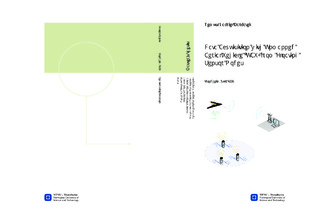| dc.description.abstract | In the last decades an increase in the need for ocean monitoring capabilities has arisen. To be able to meet these requirements a low-cost, automated solution is needed. It should be easy to maintain and to reconfigure as well as environmentally friendly.To this extent, a small-sized floating sensor node would be suitable for the task. The node would be similar to a floating buoy but having a size comparable to that of a soda can. Furthermore it should be easily deployable and have the possibility to be recuperated from the ocean surface using UAVs with fixed-wing or using multicopters but these aspects are not part of this current work.There is also a need to transfer the data between the UAVs, sensor nodes and the end user. This is done using robust hardware, reliable software frameworks and well established protocols. For the interface and communication between the sensor nodes and UAVs a software framework, called DUNE, is used and for the end-user interface NEPTUS is employed. Both of these will be described in a later chapter.In order to achieve a unified communication protocol among the devices in the system the IMC (Inter-Module Communication) message formatting is used, detailed later on.The work touches topics in disciplines such as Engineering Cybernetics, Electronics Engineering and Computer Science. Analysis and exploration has been carried out in order to analyze current existing solutions that addresses the problem, reveal what kind of measurements are possible to do with a small-sized sensor node and what kind of sensors can be used.It is important to mention that the software frameworks that have been used, DUNE and NEPTUS are projects currently being developed. They are considered to be research topics and they are also viewed as unique as compared to other similar frameworks in development today. These shall be described throughout this report. They are open source projects and have been developed during the last 10 years and are constantly being improved. They were originally used by the University of Porto and now more and more Universities are gaining inters in them. Objectives that have been achieved by the candidate throughout this work:- perform research on the type of hardware components needed- mechanically design a physical case for the device- design custom printed circuit boards for the proposed hardware- write the firmware that runs on the embedded device- program the necessary software used to communicate with the built embedded device - perform verification and validation on the system- perform measurements on data integrity and range over the wireless medium, power consumption and hardware limitations- carry out lab and field tests in order to prove the functionality of the proposed solution- analyze and interpret the results The total work carried out, tests and development that were carried out are split into two main categories, hardware and software. The hardware is composed of a sensor node with all required components (passive and active) and several boards which form a payload for the UAV. The UAV acts as a data sampler and communication relay between the sensor node (in the water or on ground) and a base station. Building the sensor node is part of the hardware category. The sensor node has been built (and tested) to be buoyant, directionally stable in water and hermetically sealed.Among the software tasks that come into the proposed solution are the programming of the microcontroller that runs the code on the embedded device, programming parts of the software framework (DUNE) that is used to communicate with the embedded device and prepare the intercommunication between DUNE and the end-user application, NEPTUS.A simple conclusion on the work that has been carried out so far, after running field tests with the proposed system is that the proposed solution can be a viable solution good for the scientific community and with more work it could even be developed into a working product. | nb_NO |

